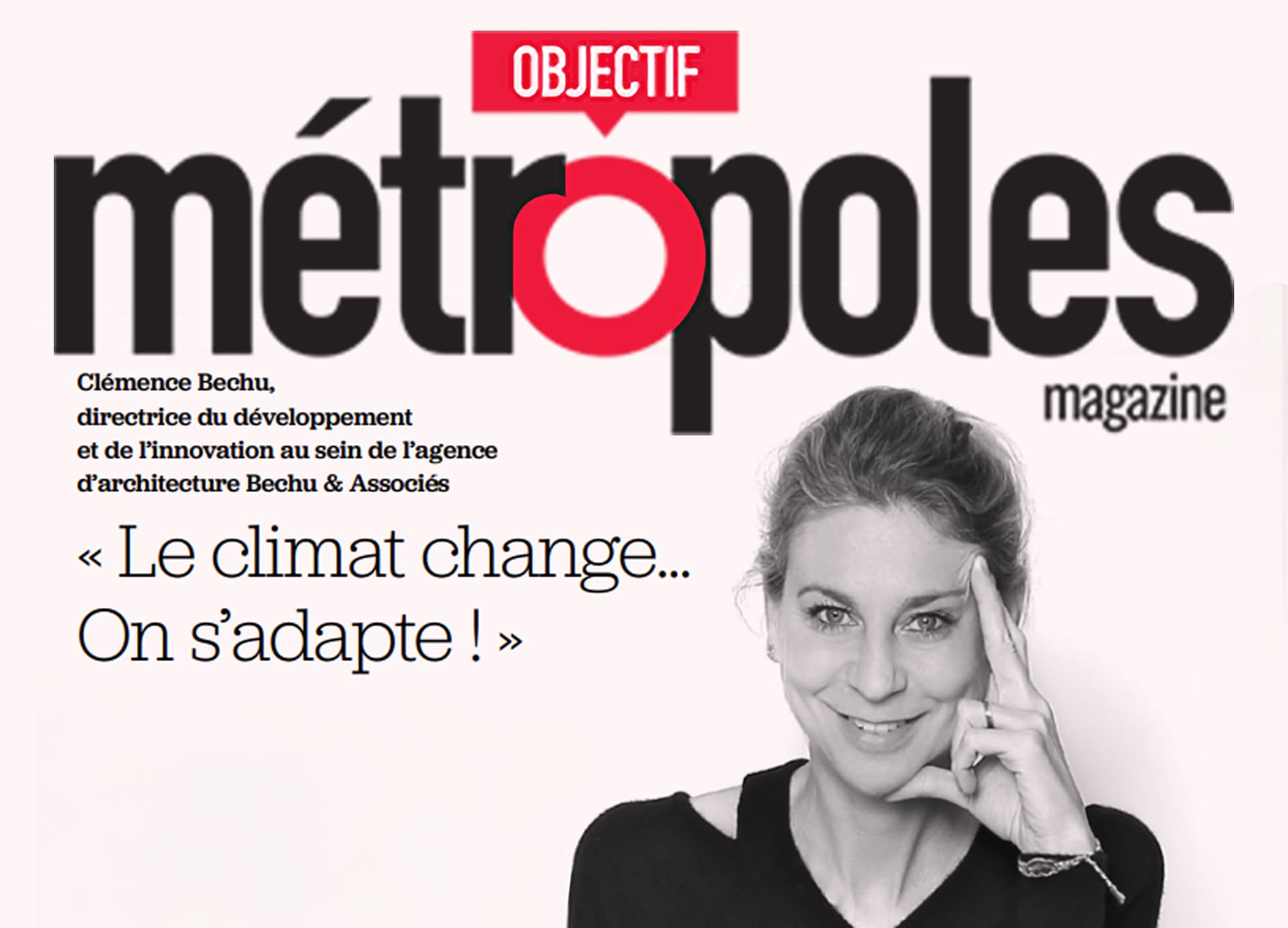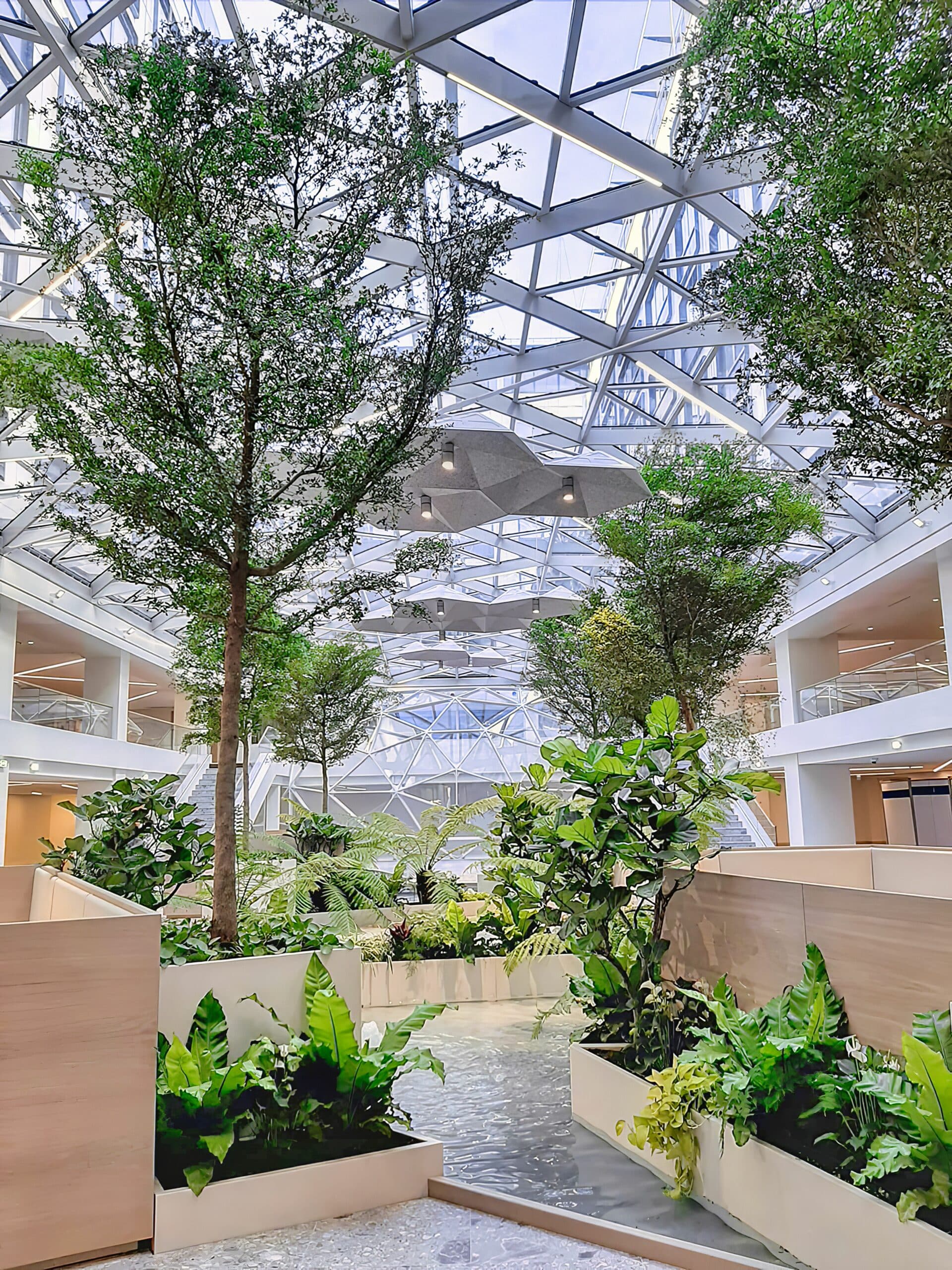New section Objectif Métropoles "The climate is changing...We are adapting!"
"As highlighted by the IPCC's 6th report, and in accordance with the requirements of the European taxonomy, in addition to mitigating climate change, we must, from now on, implement the best measures enabling us to live with it."

We are talking about adaptation

A way of designing and inhabiting the city, whose sine qua non condition is first to learn to gradually cope with the multiple consequences linked to climate change at a micro-urban scale. This involves adapting to both direct impacts, such as heatwaves and urban heat islands, biodiversity loss, flooding episodes, or water scarcity, as well as indirect effects increasingly manifested through citizen movements for the climate, population migrations, or pandemics that will undoubtedly return! Adaptation is as essential as mitigation, and the efforts required in this regard will not be the same in a world at +2°C or +4°C. The success of adaptation thus depends on the success of mitigation, and vice versa.

Adaptation involves a very close ecosystemic relationship between a living entity and its belonging ecosystem
Whether one considers its biological, psychological, or physiological definition, adaptation involves a very close ecosystemic relationship between a living entity and its belonging ecosystem, requiring that the latter be equally capable of entering into this same vital dynamic.
An unstable and fragile balance whose risk, if not maintained, is to lean toward an opposite and irreversible state: disruption. If we attempt to transpose this to urban environments, however diverse, climate disruption implies a certain incapacity of cities and their inhabitants to adapt to climate change. In a world with cities that will host at least 70% of Homo sapiens by 2050 and that are both the main contributors to climate change and its primary victims, our inability to adapt represents the major risk to the preservation of our species, now predominantly urban. It is therefore also an opportunity to seize for building our future economy: that of our climate transition.
Thus, speaking of adaptation, it is fascinating to observe that the reduction of the impact of each of these consequences is factually correlated with the improvement of others. By promoting biodiversity in cities, we enhance their cooling capacity and encourage the development of associated educational initiatives. A better understanding of the benefits of nature and its functioning is both a guarantee for its protection—and thus ours—as well as a means to develop new resilient innovation pathways inspired by its ability to continuously adapt in a sort of ongoing optimization race.
Urban innovations, towards more sustainable cities
Biomimicry
By increasing the albedo of roofs in dense and hot environments, energy consumption needs are minimized, and daily comfort for everyone is enhanced. It is also a way to strengthen collective efforts and encourage "passive" eco-friendly actions from each individual.
Low carbon
By organizing to optimize our circular economies, we minimize our need for primary resources. Cities are empowered by structuring new, more localized economies, which also create new jobs. Pride is instilled, and the desire to do better is fostered.
Circular city
By anticipating floods through adapted infrastructures, better water drainage is promoted, which can be used to irrigate market gardening areas and thus ensure local food production contributing to the key challenge of the "nurturing city." Seventy percent of an "urban" human population implies that 70% of food will be consumed in cities.
Resilience
By equipping ourselves with the means to map climate risk in a precise and scientific manner, prior to any adaptation plan, we enable action where it is most relevant, with a far more effective return on investment for the defined measures. This is what the city of Cannes has recently implemented by choosing to become a "pilot territory for innovative solutions by The Climate Company."

Enthusiasm is the key to awakening the strength of the collective
Creativity, intelligence, vigor, resilience, endurance, responsiveness, flexibility, and agility are the qualities recognized in those who know how to adapt.
To meet the challenge of adapting our cities, I would add one essential quality: enthusiasm, as it is the key to awakening the strength of the collective. Just as "low carbon" cannot be generated alone, building the path to adaptation is a collective endeavor, involving all stakeholders: from public spheres to private institutions, from adult citizens to the youngest. This must be achieved through a strategy built on a national reflection on territorial planning, targeting specific objectives and highlighting feedback—successful or not—that will enable PNACC 3** to truly aim for improvement. And if there is one thing in which this enthusiasm for working toward a world capable of adapting resides, it is that it also involves creating new promising professions for future generations wishing to act for the good of the planet, thereby restoring the following adage to its proper meaning: "It is not Man who will save the planet, but the planet that will save Man..."


